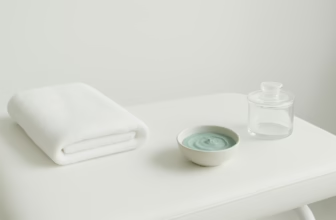If you want to create a comfortable and calming environment for your autistic child, there are multiple factors that you’ll need to keep in mind. Everything from colours and patterns to noise and textures can influence what a child with autism may find stimulating. We’ve explored some of the key points below.
Careful selection of decor
Autistic people can find things stimulating that some neurotypicals may find surprising. Two main decor elements that this can include are the walls and floors of a room.
Walls
While the colours of a wall can affect any child, if yours has autism, they may be more prone to its effects. Brighter colours, such as reds, oranges, and yellows, can be overstimulating. Instead, you should use warm, neutral shades. Blues, greens, and purples are perfect for creating a calmer atmosphere where your child can properly relax.
Additionally, you should avoid using any patterning. For example, polka dots and plaid patterns can distract your child and provide a stimulating environment. Instead, opt for a single, plain colour.
Finally, you might also want to stay away from plain white walls, as this can interfere with your child’s perception of their space.
Floors
When it comes to flooring, you need to be aware of sound insulation. Autistic children can be highly susceptible to sound and loud noises, so using hardwood or carpet flooring can help create a much quieter and calming environment.
While you might be tempted by laminate as an affordable alternative to hardwood, its properties differ significantly. Instead of insulating sound, it reflects it, creating a louder, uncomfortable environment.
Comfortable furniture and functional layouts
Choosing functional furniture can help optimise space and let your child feel as if they’re in control of their own space. You should also seek to place larger furniture like the bed in quieter areas of the room, as this can help provide more restful sleep.
We also recommend you consider kids' bunk beds, as certain options can include additional storage space. This is perfect for letting your child have the space and freedom to organize their own room, creating a layout that suits their needs.
Have a sensory deprivation area
Your autistic child is highly likely to encounter sensory overload throughout their lives. Even in the perfect bedroom, they may need an additional sensory deprivation area to escape from any negative feelings.
This can be completed relatively simply, with a small, plain tee-pee with soft pillows and blankets your child finds comfortable. You may also want to include sound-cancelling headphones to limit any auditory stimulations, and their preferred fidget toys.
Having this safe, secluded area also promotes your child’s self-regulation. If they begin to feel overwhelmed, they can escape into a stress-free area and calm down, rather than have an outburst in public.
Follow me down the rabbit hole!
I'm Alice and I live with a dizzying assortment of invisible disabilities, including ADHD and fibromyalgia. I write to raise awareness and end the stigma surrounding mental and chronic illnesses of all kinds.








